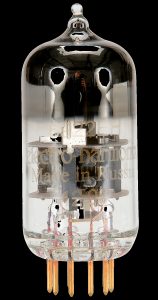CABLE MICROPHONICS Every cable has it, to some degree
SOUNDS LIKE noise thru amp when touching or handling the cable
 Guitar Noise Manual by PedalSnake®
Guitar Noise Manual by PedalSnake®
.
 Jody Page, PedalSnake’s inventor and lifelong pro guitarist, is an electrical engineer (a member of NASA’s Space Foundation Hall of Fame, no less) with special training in electrical noise. In the Guitar Noise Manual, Jody starts by breaking down guitar rig noise into 6 types:
Jody Page, PedalSnake’s inventor and lifelong pro guitarist, is an electrical engineer (a member of NASA’s Space Foundation Hall of Fame, no less) with special training in electrical noise. In the Guitar Noise Manual, Jody starts by breaking down guitar rig noise into 6 types:
1) BUZZ 2) HUM 3) HISS 4) DIGITAL NOISE (WHINE) 5) POWER SUPPLY NOISE 6) CABLE MICROPHONICS
For each noise, Jody explains its causes, then offers a targeted set of solutions. Also included are several helpful articles on general best-practices for noise reduction.
.
So What’s the Deal With CABLE MICROPHONICS?
Contents
Improving Signal-to-Noise Ratio
.
What It Is
While it is hardly ever noticed, all cables have it to some degree.
We rarely experience it, but when we do, handling noise will come through your amp when you touch the cable.
So why do we hear it sometimes, and not others?
First, let’s understand what’s happening. There are 2 ways cables can be microphonic:
.
Triboelectric, aka Static
The triboelectric effect has to do with stuff rubbing together.
 When you touch a cord, the vibrations cause a few little molecules to rub together, producing a static charge. If you are playing at high gain settings in your pedals and amp, sometimes you can hear this as “handling noise”.
When you touch a cord, the vibrations cause a few little molecules to rub together, producing a static charge. If you are playing at high gain settings in your pedals and amp, sometimes you can hear this as “handling noise”.
When microphonic cables occur, it can be triboelectric, or it can be due to the condenser mic effect.
The Condenser Mic Effect
 Why?
Why?
Some DC voltage has gotten onto the cable.
This is how condenser mics work. You put a DC charge between two capacitive elements. When the elements are vibrated by sound, the capacitance changes, coughing up charge and producing signal.
A cable has capacitance too. And if you touch it, the vibrations cause the capacitance to change. So if you put DC onto the cable, and plug it into an amp…well…get the picture?
But where does the DC charge come from?
Gear Going South
 To be sure, there is not supposed to be any. But if your gear is faulty, it can happen. We have spoken to technicians have seen as much as 2.5 VDC at the input of an amp, due to a leaky grid in the first preamp tube.
To be sure, there is not supposed to be any. But if your gear is faulty, it can happen. We have spoken to technicians have seen as much as 2.5 VDC at the input of an amp, due to a leaky grid in the first preamp tube.
A bad DC blocking cap in a pedal could put also DC on the cable.
But the point is, when you hear cable microphonics, you may have an amp that needs a new tube, or something worse. Something somewhere could be ready to fail, or at least not sounding as good as it could.
PedalSnake may tell you even sooner. Why? (you ask).
HiC-LoZ
 PedalSnake has pioneered the HiC-LoZ™ method of pedal cabling. Traditional guitar cables have always been low capacitance (low C). They had to be to preserve tone with high impedance guitar pickups.
PedalSnake has pioneered the HiC-LoZ™ method of pedal cabling. Traditional guitar cables have always been low capacitance (low C). They had to be to preserve tone with high impedance guitar pickups.
 But once you start using the low impedance (low Z) output of an effects pedal, then a high capacitance (high C) cable is better.
But once you start using the low impedance (low Z) output of an effects pedal, then a high capacitance (high C) cable is better.
This is because a Lo-Z output driving a Hi-C cable is the quietest connection you can have for electrical noise, which is the more common type of noise. (Handing noise is mechanically-induced noise.)
But if any DC voltage ever creeps onto a cable (this should not happen), thenhigher capacitance can mean more of a condenser mic effect. So if this happens, PedalSnake is likely to “hear it” louder than a traditional cable, and hopefully all you have is a leaky preamp tube, or a faulty DC blocking cap in a pedal or amp.
.
Improve Signal-to-Noise Ratio with Clean Boost
It should be noted that just because you can hear some handling noise does not mean you have a problem that has to be fixed. If you only hear it when handling the cable, and it does not affect your tone and playing, then you can just leave it alone.
But if you wish to reduce the noise, this can always be done by improving your signal-to-noise ratio (SNR), which is always a good idea, whether you have handling noise or not.
To improve SNR, use a clean boost pedal to increase the signal level before it enters the suspect cable. Generally, you put the boost pedal first in the pedal chain, and plug your ax directly into it.

Increasing your signal level with the boost pedal allows you to turn down the gain on any and all devices downstream. This not only reduces the mechanical cable handling noise, but any electrical noise associated with pedals and amps further down the signal chain.
This means a quieter rig, and is a common and fundamental practice for guitarists to explore, and one of the best uses for clean boost pedals.
For more, see Improving Signal-to-Noise Ratio.
